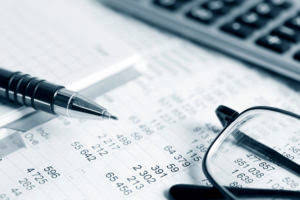Content

These financial statements give a quick overview of the company’s financial position. The accounting equation makes sure the balance sheet is balanced, showing that transactions are recorded accurately. This basic accounting equation “balances” the company’s balance sheet, showing that a company’s total assets are equal to the sum of its liabilities and shareholders’ equity. This formula, also known as the balance sheet equation, shows that what a company owns (assets) is purchased by either what it owes (liabilities) or by what its owners invest (equity). The liabilities are similarly divided into current liabilities and noncurrent liabilities. Most amounts payable to the company’s suppliers (accounts payable), to employees (wages payable), or to governments (taxes payable) are included among the current liabilities.

It is based on the idea that each transaction has an equal effect. It is used to transfer totals from books of prime entry into the nominal ledger. Every transaction is recorded twice so that the debit is balanced by a credit. You can think about equity in terms How To Master Restaurant Bookkeeping in Five Steps of what would happen if the company folded and liquidated its assets today. Then, whatever’s left would get distributed among the owners. Plus, if you need a loan or line of credit, understanding the relationship between assets, liability and equity is key.
Bankrate
On a more granular level, the fundamentals of financial accounting can shed light on the performance of individual departments, teams, and projects. Whether you’re looking to understand your company’s balance sheet or create one yourself, the information you’ll glean from doing so can help you make better business decisions in the long run. A balance sheet is one of the primary statements used to determine the net worth of a company and get a quick overview of its financial health. The ability to read and understand a balance sheet is a crucial skill for anyone involved in business, but it’s one that many people lack.
- The major part of this, the capital paid in by the common shareholders, is usually divided into two parts, one representing the par value, or stated value, of the shares, the other representing the excess over this amount.
- The most liquid of all assets, cash, appears on the first line of the balance sheet.
- Ultimately, the accounting equation is balancing total assets with the sum equity and liability, equity being a positive and liabilities being a negative.
- In fact, the equation for determining how much equity a company has is subtracting the company’s liabilities from its assets.
- Net income increases retained earnings; net operating loss or the distribution of cash dividends reduces them.
- To ensure our website performs well for all users, the SEC monitors the frequency of requests for SEC.gov content to ensure automated searches do not impact the ability of others to access SEC.gov content.
Equity is the money value of an owner’s interest in property after liabilities are accounted for. Lenders and other third parties typically have first claim on company assets. Market value is the current price, which investors look at to predict its future value. Book value is the past price, used for simply recording history. These may include loans, accounts payable, mortgages, deferred revenues, bond issues, warranties, and accrued expenses.
Assets, Liabilities, Equity: What Small Business Owners Should Know
In addition to running Choice Tax Relief, Logan also owns the personal finance blog Money Done Right, which educates thousands of readers a day about making, saving, and investing money. Logan also runs a YouTube channel on which he publishes weekly videos about what everyday Americans need https://adprun.net/small-business-accounting-101-12-steps-for-basics/ to know about taxes and tax relief. He has been a licensed CPA since 2010 and holds a master’s degree in business taxation from the University of Southern California. When he’s not working, he enjoys playing basketball, taking his kids to Disneyland, and discovering new hot sauces to enjoy.
- The content created by our editorial staff is objective, factual, and not influenced by our advertisers.
- It tells you when you’ve made a mistake in your accounting, and helps you keep track of all your assets, liabilities and equity.
- Cash Equivalents are also lumped under this line item and include assets that have short-term maturities under three months or assets that the company can liquidate on short notice, such as marketable securities.
- If you take out a new loan, for example, that added liability reduces owners’ equity.
- The key difference between equity and liabilities in economics is that equity represents the ownership stake that shareholders have in a company, while liabilities are debts or obligations that a company owes to others.
- External auditors, on the other hand, might use a balance sheet to ensure a company is complying with any reporting laws it’s subject to.
- For example, an investor starts a company and seeds it with $10M.
For instance, if a business takes a loan from a bank, the borrowed money will be reflected in its balance sheet as both an increase in the company’s assets and an increase in its loan liability. The accounting equation states that a company’s total assets are equal to the sum of its liabilities and its shareholders’ equity. The Working Capital ratio is similar to the Current Ratio but looks at the actual number of dollars available to pay off current liabilities. Like the current ratio, it provides an indication of the company’s ability to meet its current debt.
What Are Assets, Liabilities, and Equity?
Without this knowledge, it can be challenging to know whether a company is struggling or thriving, highlighting why learning how to read and understand a balance sheet is a crucial skill for anyone interested in business. It’s important to note that how a balance sheet is formatted differs depending on where an organization is based. The example above complies with International Financial Reporting Standards (IFRS), which companies outside the United States follow.
Which is why the balance sheet is sometimes called the statement of financial position. This account includes the total amount of long-term debt (excluding the current portion, if that account is present under current liabilities). This account is derived from the debt schedule, which outlines all of the company’s outstanding debt, the interest expense, and the principal repayment for every period. Below liabilities on the balance sheet is equity, or the amount owed to the owners of the company. Since they own the company, this amount is intuitively based on the accounting equation—whatever assets are left over after the liabilities have been accounted for must be owned by the owners, by equity.




Komentar